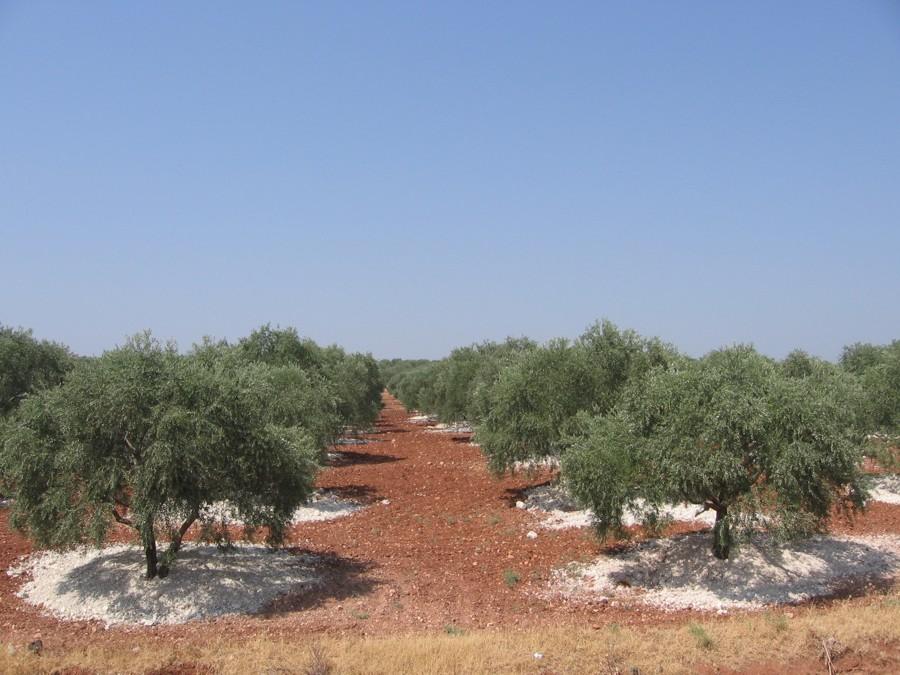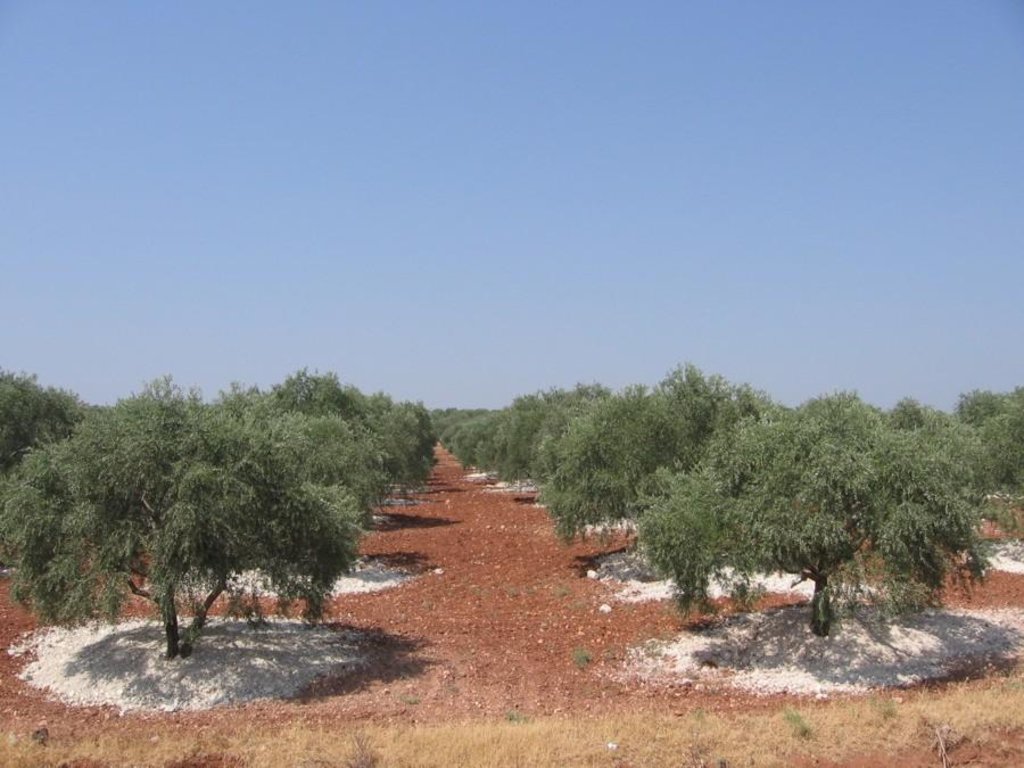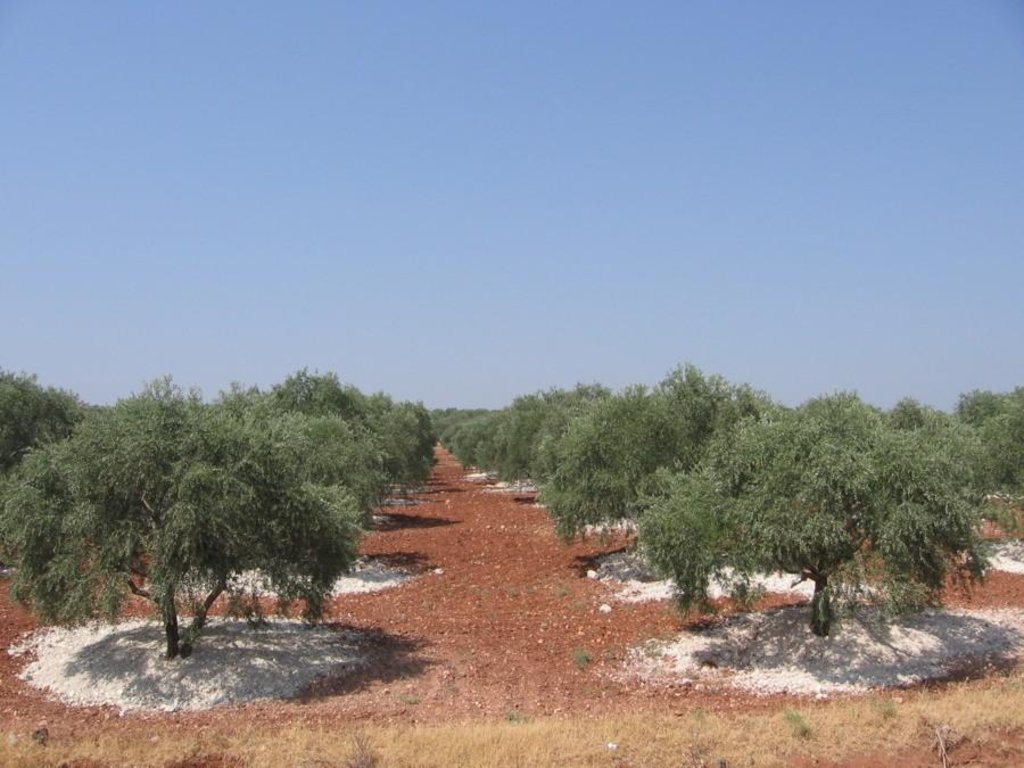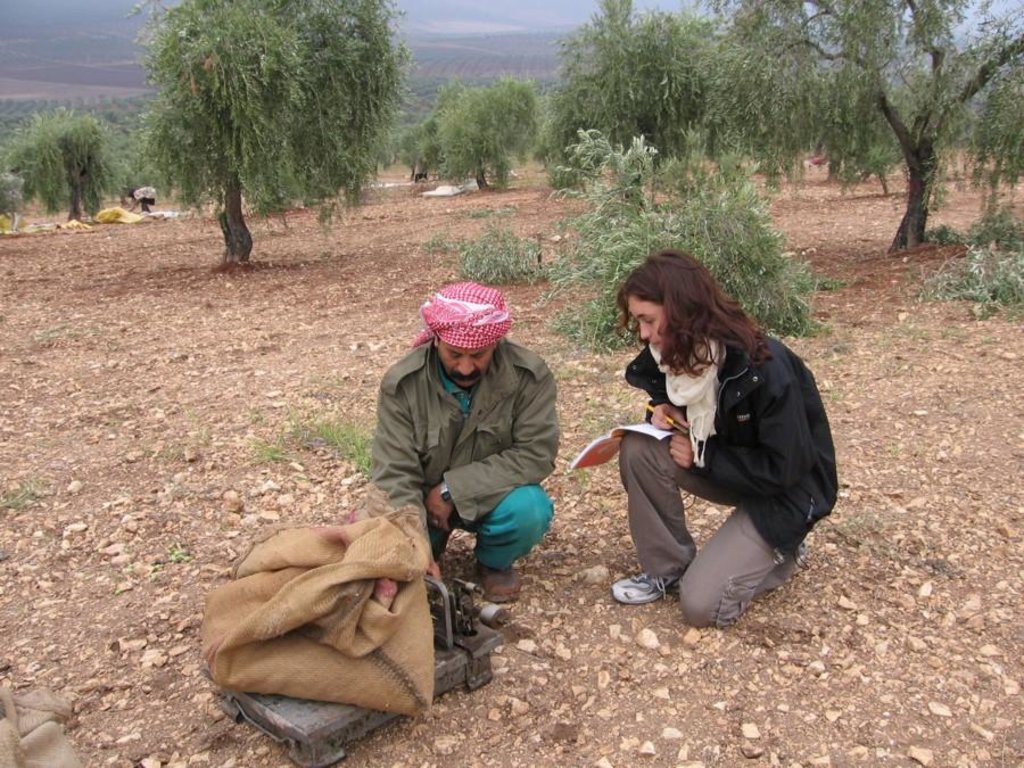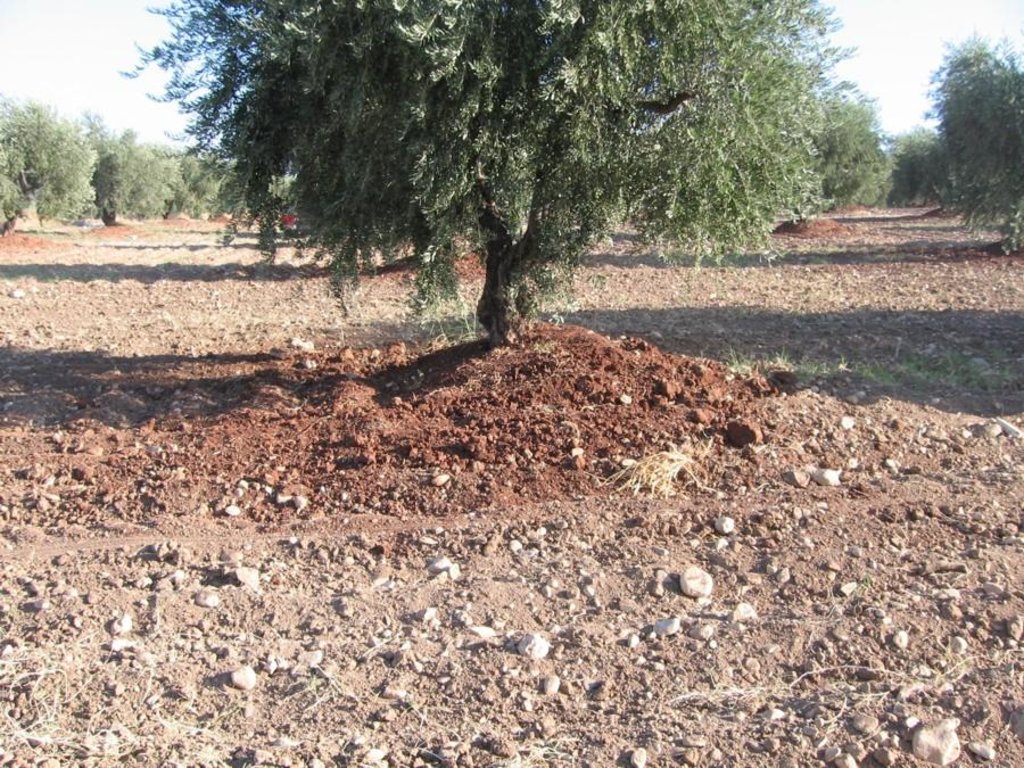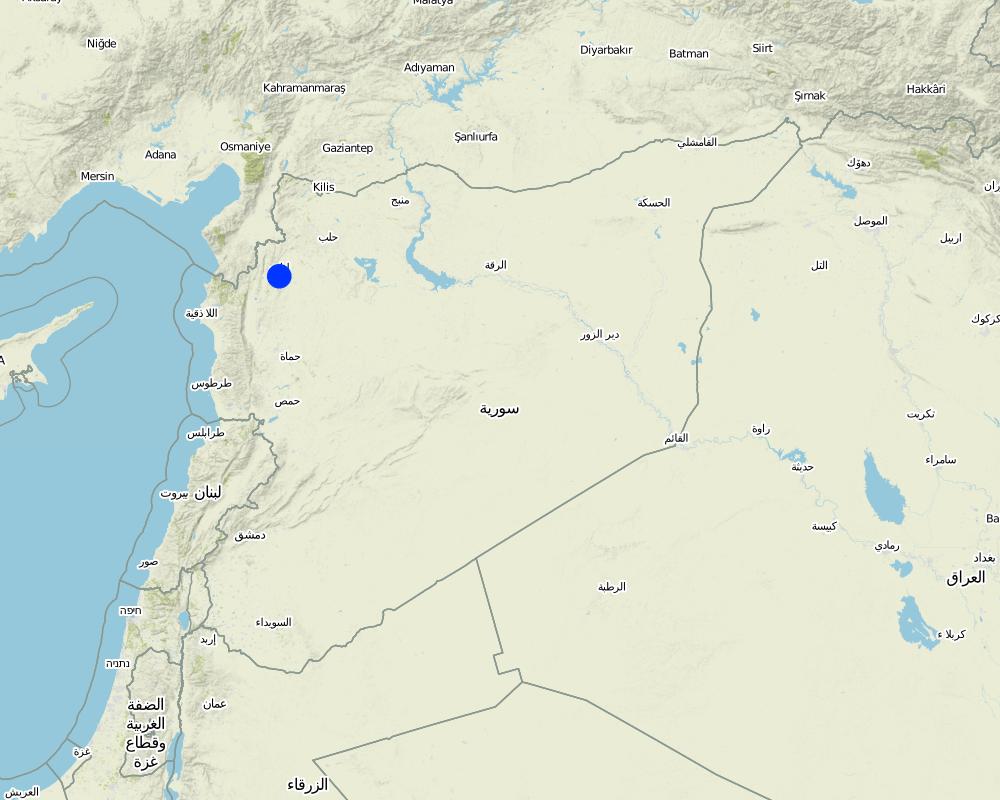Adding soil [Syrian Arab Republic]
- Creation:
- Update:
- Compiler: Liesbeth Colen
- Editor: –
- Reviewer: David Streiff
approaches_2624 - Syrian Arab Republic
View sections
Expand all Collapse all1. General information
1.2 Contact details of resource persons and institutions involved in the assessment and documentation of the Approach
SLM specialist:
SLM specialist:
Name of the institution(s) which facilitated the documentation/ evaluation of the Approach (if relevant)
Deutsche Gesellschaft für Internationale Zusammenarbeit (GIZ) GmbH (GIZ) - Germany1.3 Conditions regarding the use of data documented through WOCAT
The compiler and key resource person(s) accept the conditions regarding the use of data documented through WOCAT:
Yes
1.4 Reference(s) to Questionnaire(s) on SLM Technologies
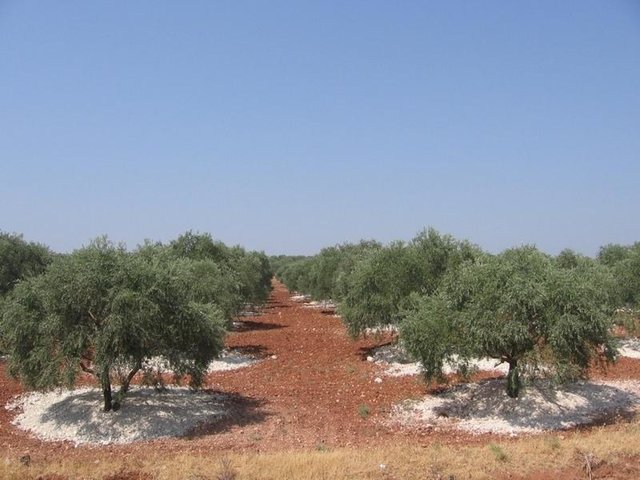
Adding Soil [Syrian Arab Republic]
To add red (fertile, nutrient rich) valley soil to degraded white soil on slopes (in olive orchards)
- Compiler: Liesbeth Colen
2. Description of the SLM Approach
2.2 Detailed description of the Approach
Detailed description of the Approach:
Aims / objectives: Observation of spontaneously spread analysis. Management invented by farmers themselves, in a later stage it should be adapted or combined with conservation strategies.
Methods: Semi-structured individual interviews and group discussions in the area where the measure is spontaneously adopted.
Stages of implementation: For now only the initial stage: Farmers applying the measure, but to make ita a developed, sustainable and conservation it should be combined with other conservation strategies to make it a complete, sustainable land management strategy,
Role of stakeholders: Technique developed by farmers themselves, they pass information among each other.
Other important information: Can not yet be considered as a real conservation strategy. Till now no interventions from scientists/institutions has been done. Only observation and analysis of this existing land management practice.
2.3 Photos of the Approach
2.5 Country/ region/ locations where the Approach has been applied
Country:
Syrian Arab Republic
Region/ State/ Province:
Afrin and Idleb
Map
×2.8 Main aims/ objectives of the Approach
The Approach focused on SLM only
replace top soil which was eroded during rainfalls, increase soil fertility, protect soil from further erosion
2.9 Conditions enabling or hindering implementation of the Technology/ Technologies applied under the Approach
availability/ access to financial resources and services
- hindering
costly, requires investment
Treatment through the SLM Approach: but applicable at small scale to spread costs over many years.
legal framework (land tenure, land and water use rights)
- enabling
The existing land ownership, land use rights / water rights helped a little the approach implementation: In areas without private land ownership farmers have less possibilities (if illegal cultivation on forest land) or incentives (if governmental agricultural land) to change the land by adding soil.
- hindering
Soil is taken away, which is not legal in all cases, lack of clear laws
Treatment through the SLM Approach: need for laws concerning this land management
knowledge about SLM, access to technical support
- hindering
physical environmewnt: can not be implemented on very steep land (tractor cannot reach)
Treatment through the SLM Approach:
3. Participation and roles of stakeholders involved
3.1 Stakeholders involved in the Approach and their roles
- local land users/ local communities
Working land users were mainly men
Only in some exceptional cases farmers' women are interviewed
Decisionmaking done by men, they pass information among each other
Each farmer decides on his own if he wants to try out this technology, economic status only determines the scope (to add soil on onlay a few trees = less expensive, or on all trees = rather done by wealthier farmers)
- SLM specialists/ agricultural advisers
Only in some exceptional cases farmers' women are interviewed.
3.2 Involvement of local land users/ local communities in the different phases of the Approach
| Involvement of local land users/ local communities | Specify who was involved and describe activities | |
|---|---|---|
| initiation/ motivation | self-mobilization | |
| planning | self-mobilization | The practice spread spontaneously to neighbouring villages and district |
| implementation | self-mobilization | responsibility for major steps, casual labour; Farmers adopt the practice spontaneously. Some extension officers start advicing the practice |
| monitoring/ evaluation | passive | Olive bureau Idleb experimented the addition of white soil on red fields. Recently samples are taken from farmers' fields to analyze the benefits. In the evaluation itself the farmers are not involved, they only agree that soil samples are taken and production is measured. |
| Research | passive | Research od social and economic aspects, farmers are passively involved by interviewing and group discussions. |
3.4 Decision-making on the selection of SLM Technology/ Technologies
Specify who decided on the selection of the Technology/ Technologies to be implemented:
- land users alone (self-initiative)
Explain:
Decisions on the method of implementing the SLM Technology were made by by land users* alone (self-initiative / bottom-up)
4. Technical support, capacity building, and knowledge management
4.1 Capacity building/ training
Was training provided to land users/ other stakeholders?
No
4.2 Advisory service
Do land users have access to an advisory service?
Yes
Describe/ comments:
Advisory service is inadequate to ensure the continuation of land conservation activities; Extension officers will be informed about the lack of sustainability and the need of combination with land management strategies, information/training about the implementation of this conservation strategies however is still lacking
4.3 Institution strengthening (organizational development)
Have institutions been established or strengthened through the Approach?
- no
4.4 Monitoring and evaluation
Is monitoring and evaluation part of the Approach?
Yes
Comments:
bio-physical aspects were ad hoc monitored by 0 through measurements; indicators: None
socio-cultural aspects were ad hoc monitored by 0 through observations; indicators: None
economic / production aspects were ad hoc monitored by 0 through observations; indicators: None
area treated aspects were ad hoc monitored by 0 through observations; indicators: None
no. of land users involved aspects were ad hoc monitored by 0 through observations; indicators: None
There were no changes in the Approach as a result of monitoring and evaluation: None
4.5 Research
Was research part of the Approach?
Yes
Specify topics:
- sociology
- economics / marketing
Give further details and indicate who did the research:
market of soil analysis, social analysis of adopters/innovators/non-adopters
Research was carried out both on station and on-farm
5. Financing and external material support
5.1 Annual budget for the SLM component of the Approach
Comments (e.g. main sources of funding/ major donors):
Approach costs were met by the following donors: other (farmer himself): 100.0%
5.2 Financial/ material support provided to land users
Did land users receive financial/ material support for implementing the Technology/ Technologies?
No
5.3 Subsidies for specific inputs (including labour)
- none
5.4 Credit
Was credit provided under the Approach for SLM activities?
No
6. Impact analysis and concluding statements
6.1 Impacts of the Approach
Did the Approach help land users to implement and maintain SLM Technologies?
- No
- Yes, little
- Yes, moderately
- Yes, greatly
Few farmers reduced the number of tillage passages to prevent erosion of newly added soil. Untill now only production is affected, but management of soil is still unchanged in most cases.
Did the Approach improve issues of land tenure/ user rights that hindered implementation of SLM Technologies?
- No
- Yes, little
- Yes, moderately
- Yes, greatly
The problem is unlikely to be overcome in the near future. Forest land is supposed to stay forest land
Did other land users / projects adopt the Approach?
- No
- Yes, little
- Yes, moderately
- Yes, greatly
After being developed in Idleb, farmers adopted the practice in Afrin. The number of farmers adopting the strategy increased exponentially.
6.3 Sustainability of Approach activities
Can the land users sustain what has been implemented through the Approach (without external support)?
- uncertain
If no or uncertain, specify and comment:
They can continue the actual practice without support but if the practice needs to be combined with conservation strategies (on the slopes), farmers need support to overcome this investment.
6.4 Strengths/ advantages of the Approach
| Strengths/ advantages/ opportunities in the land user’s view |
|---|
| Results from soil samples can prove the benefit of the practice they 'invented' and give recomendations to improve it. |
| Strengths/ advantages/ opportunities in the compiler’s or other key resource person’s view |
|---|
| While observation/analyis has been done the discussion about sustainability is opened |
| Farmers are considered the experts about this technology which might enhance future cooperation |
| Results from soil samples can prove the benefit of the strategy the farmers developed. |
6.5 Weaknesses/ disadvantages of the Approach and ways of overcoming them
| Weaknesses/ disadvantages/ risks in the compiler’s or other key resource person’s view | How can they be overcome? |
|---|---|
| spreading of the practice by the land users did not focus on the sustainability and larger scale | Adaptations should be made and institutions should i ntervene to make this practice sustainable. |
7. References and links
7.1 Methods/ sources of information
- field visits, field surveys
- interviews with land users
7.2 References to available publications
Title, author, year, ISBN:
Soil transfers in olive orchards of NS Syria, a bio-physical and socio-economic analysisi of a local innovation
Available from where? Costs?
ICD, Bern
Links and modules
Expand all Collapse allLinks

Adding Soil [Syrian Arab Republic]
To add red (fertile, nutrient rich) valley soil to degraded white soil on slopes (in olive orchards)
- Compiler: Liesbeth Colen
Modules
No modules


